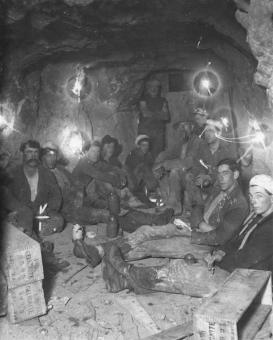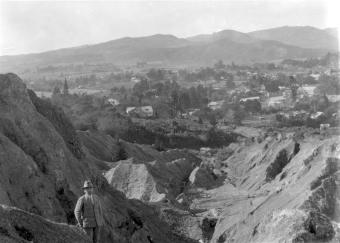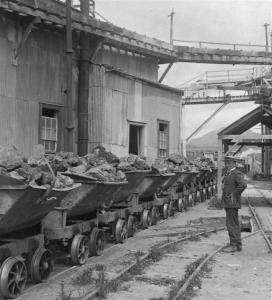 |
| Socialist Cross of Honor #5 |
In July 1911 William Cornish Jnr, a young conscientious objector from Brooklyn, Wellington, stood before Magistrate Riddell on charges of refusing to register under the Defence Act of 1909. Amended in 1910 and finally enforced in April 1911, the Act required compulsory registration of all men between the ages of 14 and 30 as an “attempt to re-organize [New Zealand’s] defence forces along the lines agreed to at the Imperial Naval and Military Conference” held in London in 1909.1 Cornish Jnr, having “no intention of obeying the law” and “prepared to take the consequences,” refused to pay the £4 fine. Instead, he was sentenced to 21 days in jail—becoming, according to Ryan Bodman, the first Pakeha political prisoner in the nation’s history.2
William Cornish Snr shared his son’s sentiment and echoed the rumblings of an antimilitarist movement gathering momentum—a movement angered by creeping militarism and state curtailment of liberty. “What is this terrible offence for which my son is punished?” wrote Cornish Snr to the Evening Post. “He refuses to register himself like a dog. A dog registered and collared!” He concluded defiantly:
My son is told to defend his country. He has got to defend his father’s property. And how much property has his father got? None. Nine-tenths of the working class—the class I belong to—have no property; therefore it means that the ruling class—the capitalists—have got the cheek and impudence to ask the sons of the workers to defend their property… I am happy and proud to be the father of such a noble son who has the courage to say: No! No! No!”3
Harry Cooke, son of the New Zealand Socialist Party’s (NZSP) Christchurch secretary Fred Cooke, was another young objector who said “No! No! No!” to the fine and was sent to jail. He was not the last. Backed by antimilitarist groups like Louise Christie’s Anti-Militarist League and Charles Mackie’s National Peace Council, along with working class bodies such as the NZSP, the Federation of Labor and the Passive Resisters’ Union (PRU), youths across New Zealand were refusing registration and compulsory military training in large numbers. By 1913 the Maoriland Worker, which started a ‘Roll of Honour’ on the jailing of Cornish Jnr, had 94 names listed (many with double sentences), while prosecutions under the Act had reached a figure of 7030.
Yet despite the statistics, antimilitarist ‘shirkers’ and ‘anti-defenders’ were in the minority—a movement on the margins of a highly conformist culture. They were often ridiculed by the mainstream press—“we have precious little sympathy with the silly, notoriety-craving youths,” wrote one scathing editor.4 Therefore, the support of collective associations like the NZSP and the PRU formed an important part of resisting militarism in its various forms, and dealing with the reprisals. With the creation of these associations came a working class counterculture with its own institutions, values and symbols, a “means of defining and winning space within the social structure.”5 Newspapers, banners, badges, slogans, songs, social events, physical spaces and social relationships were just some of the ways working people expressed their solidarity. PRU members wore distinctive red, white and gold badges on their jackets, published the spritely Repeal and had their own hockey team “with bright red uniforms and big crowds to watch them on Saturday which highlights the popularity of their cause.”6 The NZSP had its halls, Sunday schools, stationery (“the red flag and Socialist motto being very prominent”) and in 1912 even considered purchasing their own van.7
So when Cornish Jnr and Harry Cooke were imprisoned, the communities of which they were a part rallied together in true countercultural fashion. Although a demonstration planned at the prison gates was foiled when Cornish Jnr was released an hour early, the Wellington socialists threw two receptions for him at the Socialist Hall. The first, attended by a crowd of over 300, saw Cornish Jnr receive a medal from the Runanga Anti-Conscription League—possibly the first celebratory medal of its kind in the history of the New Zealand labour movement. Speaking on behalf of the League, Robert Semple “congratulated Cornish on defying an immoral law” before presenting him “with a handsome gold medal, which bears the following inscription:—‘Presented to W. Cornish, junr., by the Runanga Anti-Conscription League. 26/7/11.’”8 The following night saw Cornish Jnr receive a second medal – the Socialist Cross of Honor:
The design of this cross is based on the Victoria Cross. On the centre shield are engraved the name of the NZ Socialist Party, the number and the name of the boy. In the centre are a red flag and the words ‘Anti-Militarism’ and at the bottom is written ‘For Courage’”9
Cooke received his Socialist Cross in a similar ceremony a month later, presented by the Christchurch NZSP in front of a crowd of 200.
 |
| Cornish Jnr, as pictured by Bloomfield |
It is not known how many of these unique medals were produced. By mid-1912 the NZSP was appealing for funds to keep the practice going: “there are a number of crosses in the course of being finished, and by appearances we shall require a larger number than was anticipated.”12 References to the Socialist Cross disappear from the Maoriland Worker after June 1912 and they are missing from collectors-catalogues such as Leon Morel’s Catalogue of Medals, Medalets, Medallions of New Zealand, 1865-1940. It appears none are held in any cultural heritage institutions, making them even rarer [Edit: in August 2014 Te Papa relocated one in their collection: http://collections.tepapa.govt.nz/Object/113904].
So imagine my surprise when, after giving a talk on New Zealand’s labour movement at Occupy Christchurch (in walking distance of the PRU’s former headquarters, the Addington Railway Workshops), I was approached by a man named Walter Dobbs claiming to have PRU badges in his possession. At that stage I had no idea any such medals existed, and assumed Walter simply meant the gold PRU badges worn by its members. Instead, in his Addington storage unit, he presented me with not one but two Socialist Crosses. A cross with the faded inscription #24 was in poor condition, but the Socialist Cross of Honor #5, given to PRU founder James Kirkwood Worrall after imprisonment on 5 March 1912, was as good as new.
 |
| The Worrall brothers wearing their PRU ribbons |
It is now the morning of July 2, and ten of us have refused the fifth meal offered us. Three of our number are ill, one seriously. It makes no difference, however, as we have decided that unless we are allowed to return to the barrack room and given our full rations, we will be carried off the island dead, or as near dead as our tormentors will allow us to get… Our message to you, our comrades, is to fight hard. No quarter! No compromise! No surrender! We are prepared to play the game to the last: all we ask is for you to do the same. Let the world know that this little country is game enough to challenge the power of the military autocracy which is threatening to overwhelm the world, and is ruining the workers of the world.14
Massey called an immediate Cabinet meeting and the following day promised the conference that conditions on the island would be improved, military drill would not be enforced and inquiries into all complaints would be made. Although not the unconditional release originally demanded, the hunger strikers and resulting publicity had won their point.15
These letters give a rare insight into the fraught activity of antimilitarists like Worrall and highlight the importance of both collective and family support, the latter being a key but under-examined institution.16 “With your letters time passes fairly quickly,” wrote Worrall to his mother, just after the hunger strike,
I received Father’s note, and was very disappointed that he could not come across… I hope that Father left the fruit across there, because I feel fit to eat some. Perhaps you may be able to come another day this week—try, anyway, because I want Father to see the place. Don’t forget to make things hot outside. I will write more soon. Don’t worry, we will win yet. Don’t forget the fruit. W Hooper and I are waiting for it.17
Likewise, the Socialist Cross and corresponding letters shown to me by Walter highlight how much important archival material relating to the labour movement exists in private collections, its value often unknown to their owners. Sadly, in a time of cuts and mergers, archival outreach is often the last thing on a heritage minister’s mind. That is why labour history and accounts of our working past are important—the continuation of a working class counter-culture held dear to those that struggled to create it. As Fred Cooke wrote in 1911, “in the future, when working-class history comes to be written, our Cross will be held in high esteem.”18
ENDNOTES
1. R.L. Weitzel, ‘Pacifists and Anti-militarists, 1909–1914’, New Zealand Journal of History, 1973, p.128.
2. Maoriland Worker, 14 July 1911; Ryan Bodman, “‘Don’t be a Conscript, be a Man!’ A History of the Passive Resisters’ Union, 1912-1914”, Masters Dissertation, University of Auckland, 2010, p.8.
3. Evening Post, 10 July 1911.
4. Marlborough Express, 7 April 1913.
5. Bill Osgerby, as cited by Alan Howkins. ‘Labour and Culture: mapping the field’ in John Martin & Kerry Taylor, (eds.), Culture and the Labour Movement: essays in New Zealand Labour History, Dunmore Press, 1991, p.26.
6. Maoriland Worker, 28 June 1912. Special thanks to Ryan Bodman for pointing this out to me.
7. NZ Truth, 5 August 1911.
8. Maoriland Worker, 11 August 1911.
9. Maoriland Worker, 25 August 1911.
10. Maoriland Worker, 12 April 1912.
11. Howkins. ‘Labour and Culture: mapping the field’, p.25.
12. Maoriland Worker, 12 April 1912.
13. Bodman, ‘Don’t be a Conscript, be a Man!’, p.21.
14. NZ Truth, 5 July 1913.
15. Bert Roth, ‘The Prisoners of Ripa Island’, Here and Now, November 1954, p.18.
16. Melanie Nolan, ‘Family and Culture: Jack and Maggie McCullough and the Christchurch Skilled Working Class, 1880s-1920s’ in Culture and the Labour Movement, p.164.
17. James Worrall, letter to his mother, 2 July 1913, private collection.
18. Maoriland Worker, 25 August 1911.





 Besides
sitting atop a gold mine, the town of Waihi rests on some political and
economic fault lines that stretch from the present right back to the
town’s European origins. Perhaps the most pivotal event in that history,
aside from the discovery of gold itself, was the miners strike which
began 100 years ago in May and ended six-and-a-half months later, after
the death on 12 November 1912 of one of the strikers, Fred Evans.
Besides
sitting atop a gold mine, the town of Waihi rests on some political and
economic fault lines that stretch from the present right back to the
town’s European origins. Perhaps the most pivotal event in that history,
aside from the discovery of gold itself, was the miners strike which
began 100 years ago in May and ended six-and-a-half months later, after
the death on 12 November 1912 of one of the strikers, Fred Evans. Challenging
the “received truth” is one of the goals of the LHP’s November seminar.
As well as a series of papers by New Zealand and Australian historians,
the LHP programme (see a draft schedule below) will be supported by a
series of cultural events, including a “Waihi oratorio” specially
written and directed by South Island playwright Paul Maunder; the launch
of “Gold Strike,” an exhibition by
Challenging
the “received truth” is one of the goals of the LHP’s November seminar.
As well as a series of papers by New Zealand and Australian historians,
the LHP programme (see a draft schedule below) will be supported by a
series of cultural events, including a “Waihi oratorio” specially
written and directed by South Island playwright Paul Maunder; the launch
of “Gold Strike,” an exhibition by  Remember Waihi – Draft Centenary Seminar Programme
Remember Waihi – Draft Centenary Seminar Programme













